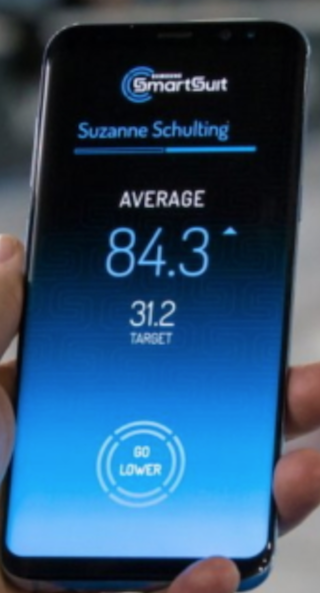 Last night the Olympic Games kicked off in Pyeongchang South Korea. For many, the road to the games was filled hard work, training, and, increasingly, gadgets.
Last night the Olympic Games kicked off in Pyeongchang South Korea. For many, the road to the games was filled hard work, training, and, increasingly, gadgets.
Olympic teams have turned to the latest technology to enhance performance and keep competitors safe. With athletes pushing their bodies to the limit, the event can be notoriously dangerous — in fact, the Olympics Committee and GE Healthcare recently launched a new analytics tool that will allow officials to keep track of athletes' injuries, performance, and safety.
Below, MobiHealthNews took a look at some of the other gadgets and gear athletes are using to train, recover, and improve during this year’s Olympic games.
The BBC reports that the US ski team is using the Halo Sport head set, which transmit electrical currents to the brain’s motor cortex. The technology is supposed to increase strength, endurance, and muscle memory by promoting brain elasticity, and recently was the recipient of a $13 million investment.
Despite the best training, however, injuries do occur. CNBC reports that some athletes are using Nike’s Strobe Sports Training Glasses to retrain themselves after a knee injury. The device obscures vision and emits rapid bursts of lights which distorts reality and force the body to move instinctively instead of by sight. The idea is to retrain the brain so the athlete will move their body based on natural cues, as opposed to visual ones.
Olympic courses are notoriously dangerous, and knowing the course can help avoid injury. Almost every athlete has practiced envisioning the course to some extent, but now the Olympic skiers are using one more tool to better learn the course: virtual reality. The BBC reports that the US ski team has been using STRIVR’s 360-degree video to film the course. The athletes then watches this footage on Oculus Rift and Samsung Gear headsets while balancing on boards to get a more authentic skiing experience while preparing for their upcoming races.
As for connected performance gear, Hans Brinker’s sliver skates can step aside for a new generation of Dutch skaters outfitted with Samsung's SmartSuits. Dutch short track skaters Sjinkie Knegt and Suzanne Schulting will be using the suit, which measures body posture on the ice in order to calculate the distance from their hips to the ice, according to a statement. It also wirelessly connects to the coach’s smartphone and provides realtime data. If a skaters position is not optimal, a coach viewing the data can press a button that creates a vibration on the skater's wrist, alerting them to correct their form.
“By quantifying the skater’s body posture, we can train even more effectively. I’ve already noticed that Sjinkie and Suzanne have benefited from this unique innovation,” Dutch National Team Manager Jeroen Otter, said in a statement. “At the championship level, it’s all about the details. Training with the Samsung SmartSuit and the immediate feedback via the smartphone can make the difference between silver and gold.”
The athletes and coaches are also onboard with this new technology.
“I always used to skate by intuition, so I had to guesstimate whether I’m bent deep enough. But now, my coach can see precisely if I have to bend just a bit deeper to find my ideal posture,” Sjinkie Knegt said in a statement.
But using tech to improve performance isn’t just for the speedy sports. While figure skating performances may look effortless, members of the US figure skating are getting a little extra help behind the scenes through the use of sensors and 3D models. Five out of the six members of the US figure skating team have taken a visit to University of Delaware Professor Jim Richards, according to Delaware Public Radio. These skaters wore reflective sensors beneath the watchful eyes of rinkside cameras taking rapid photos of the skater. Richards then recreated the skaters position, creating a 3D model from a mathematical algorithm that can be used to improve their jumps.
Lastly, despite the fridgid South Korean temperatures, tech will make it a bit easier for US athletes to keep themselves warm. This year, all of the official US Olympic coats will come with built in heating systems.














